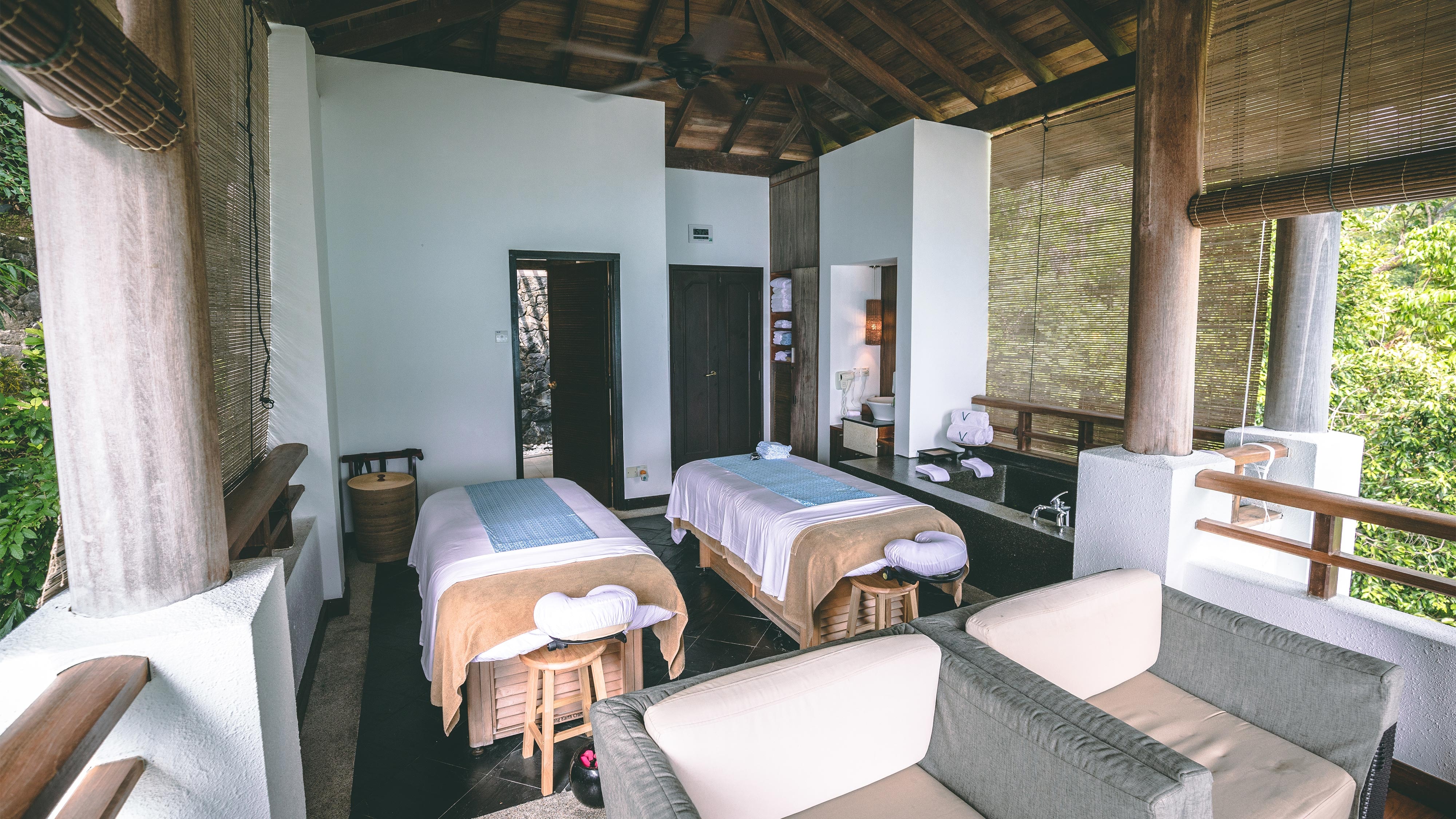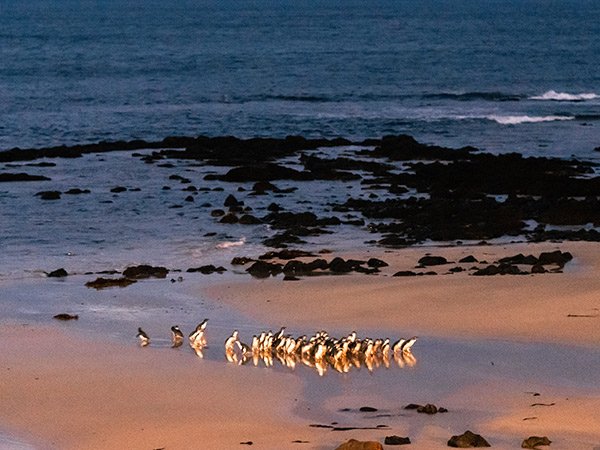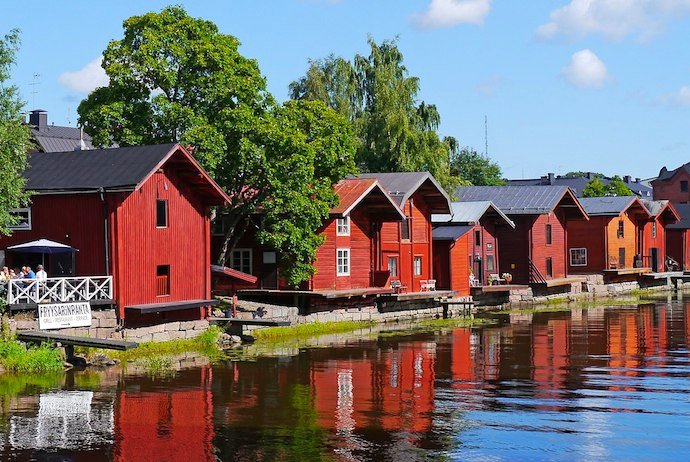HOLDING 10-CENTIMETER, lumpy invertebrates is not my favorite pastime. And when it’s a greyish yellow sea cucumber starting to drape itself over my hand, I abandon all dignity and squeal in the highest pitch possible. Someone hastily plucks it off my palm lest the creature die from trauma, instead of finding new life in the sea. We’re both attending the launch of The Andaman, a Luxury Collection Resort, Langkawi’s Gamat Regeneration Project.

The beautiful Datai Bay.
With their unfortunate resemblance to slugs, sea cucumbers—known as gamats in peninsular Malaysia—are hardly poster kids for marine conservation, unlike, say, cute turtles, vibrant corals and magnificent sharks.
But their CV is not to be sniffed at. A cousin of starfish and sea urchins,they break down debris in oceans and play an important role in recycling nutrients back into the food chain. The stichopus horrens, or golden sea cucumber species (not to be confused with the holothurian scabra, or sandfish species that is harvested for food in other Malaysian states) common in Langkawi is particularly prized for its healing properties—cuts, ulcers, toothaches, whatever—making it the backbone of an extremely lucrative industry producing everything from oils to toothpaste. Factory tours are touted as a must for visitors, with gamat creams the default kitschy souvenirs.
In the palm of your hand: a sea cucumber.
So profitable is the scavenger that in 2017, more than 500 kilograms of illegally fished gamats were seized off the northeastern Kelantan coast from foreign vessels. Authorities then estimated their sale price in “neighboring countries” to be as high as RM100 per kilogram, 10 times more than in Malaysia.

Sea corals blooming in the nursery.
“Since the 1990s, Langkawi’s sea cucumbers began becoming endangered, as people have been collecting them for gamat oil,” says The Andaman’s lead coral curator and marine biologist Hidayah Husein, who oversees the Gamat Regeneration Project. “Most conservation programs in Malaysia are on turtles, which are already endangered. The sea cucumber is not close to extinction yet, but few studies are done on it. So we have the chance to do something about its depletion before it’s too late.”
According to a 2008 report by the Food and Agriculture Organization of the United Nations, the Establishment of Marine Parks Malaysia Order 1994 prevents the illegal collection of marine organisms in marine parks, but there are no quotas or minimum size benchmarks to protect sea cucumbers from being over-fished in other areas. Other than the establishment of a two-hectare ecosanctuary in 2007 off Pulau Singa Besar on the northwest coast of Malaysia, little else has been done to stem the indiscriminate harvesting of sea cucumbers in Langkawi’s waters. Sedimentation of the coasts caused by land clearing has also affected their habitats.

Mangrove forest
So, in a sea of turtle-, coral- and native flora–conservation refrain, the Andaman’s gamat program is an unconventional one that puts a critical and overlooked issue on the environmental radar.
Husein says that trials were conducted at the end of last year to uncover the best ways to help the gamats reproduce asexually. In a natural spawning environment, the sperm and eggs are released at only specific times, so this can be a relatively slow process.
But in cisterns next to the coral nursery pool, sea cucumbers are made to go through a literally tight situation in order to induce multiplication. Each one is tied in the middle between its posterior where the anus is located, and the anterior where the mouth is. This induces stress on the animal and it undergoes a fission process where it splits itself into two. The anterior continues eating to restore nutrients that would regenerate the internal organs, including the development of a new anus. The posterior remains motionless while it undergoes

The Andaman’s coral nursery.
peristaltic movement to push the internal organs to the posterior and develops a new mouth to ingest nutrients again. Sounds pretty cool, but there are uncertain factors.
“We found that different materials contributed to successful splits such as rubber band for the golden sea cucumber and cable tie for the black sea cucumber,” Husein says. “When we tried other materials, the sea cucumber either escaped or died under stress.”
The weekend of the project’s launch, we gather under gloomy skies to drop 20 of the 50 regenerated gamats into the Datai Bay. I take the tray of water containing my traumatized-but-hopefully recovered gamat and, together with Andaman staff, paddle out about 150 meters to sea in a kayak. I tip the tray over and the gamat gently disappears into the waters to fulfill its destiny. We quickly paddle back to shore, and not a moment too soon, as the skies open up themselves for the second time that day.
During my stay, I try one of Andaman Langkawi’s signature spa treatments, the “Song of the Malay Rainforest” ritual (RM800), which includes a Barut Gamat Awet Muda (Regenerating Gamat Body Envelopment, ironic I know). The website states that the “sea cucumber accelerates the regeneration of cells, bone, collagen and skin.” I’m assuming the transformation was mostly internal as the wrap, a warm blend of cekur (an aromatic ginger), kaolin clay, rice flour and gamat water, left me feeling refreshed and cleansed, but otherwise not perceptibly changed.

A spa treatment villa at The Andaman.
That said, I do take back my earlier kitschy souvenir comment because the gamat cream I bought en route to the airport is truly miraculous. The day before, I had strolled through The Andaman’s new butterfly garden where, mosquito magnet me, I was bombarded while two of my companions escaped unscathed. The annoying itch I’d been experiencing disappears within minutes of applying the cream, and a few hours later at home, the red bumps have disappeared completely. I deliberate whether to stock up the next time I’m in Langkawi. Looks like I’ve got to put more gamats back into the ocean. marriott.com; doubles from RM645.
BEYOND TURTLES
Check out these resorts for how they protect other less-loved creatures.
Amanwana
A sanctuary on Moyo Island, Indonesia, has been set up to let the 21 members of the local rusa deer population (above), which had been drastically reduced by illegal hunting and being made into dog food, roam free in a protected area. Visit during the deer’s natural feeding times at dawn and dusk. aman.com/resorts/amanwana.
Fairmont Yangcheng Lake
This hotel in Suzhou, China, has 10 beehives producing fresh honey on its namesake lake, and is part of Fairmont’s Bee Sustainable program, run with Pollinator Partnership. More than 40 bee hotels and apiaries provide refuge for wild mason bees, important regulators of the ecosystem whose natural habitats are under threat. fairmont bee sustainable.com.
Inle Heritage
Burmese cats were extinct in the country before Inle Heritage started a feline sanctuary for them in partnership with the China Exploration and Research Society. Now more than 30 cats in brown, champagne, blue and even lilac roam freely among their cathouses with a set schedule of feeding, grooming and health checkups. This and other sustainability, heritage and social impact programs are supported by Inle Heritage’s accommodation, restaurant and gift-shop businesses. inleheritage.org.
InterContinental Danang Sun Peninsula Resort
It’s serious monkey business as the resort protects the bio-diversity of the 4,439-hectare Son Tra Nature Reserve in central Vietnam. Initiatives include wildlife education workshops and building bridges to help the critically endangered red-shanked douc langurs cross safely through the forest. danang.intercontinental.com.


